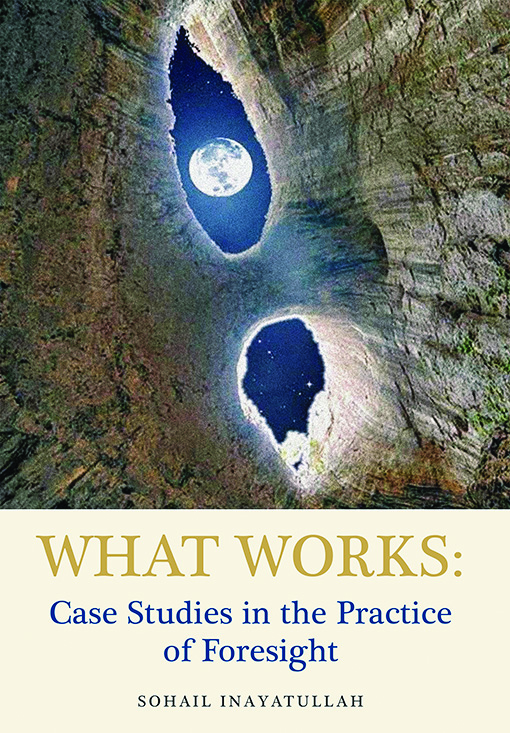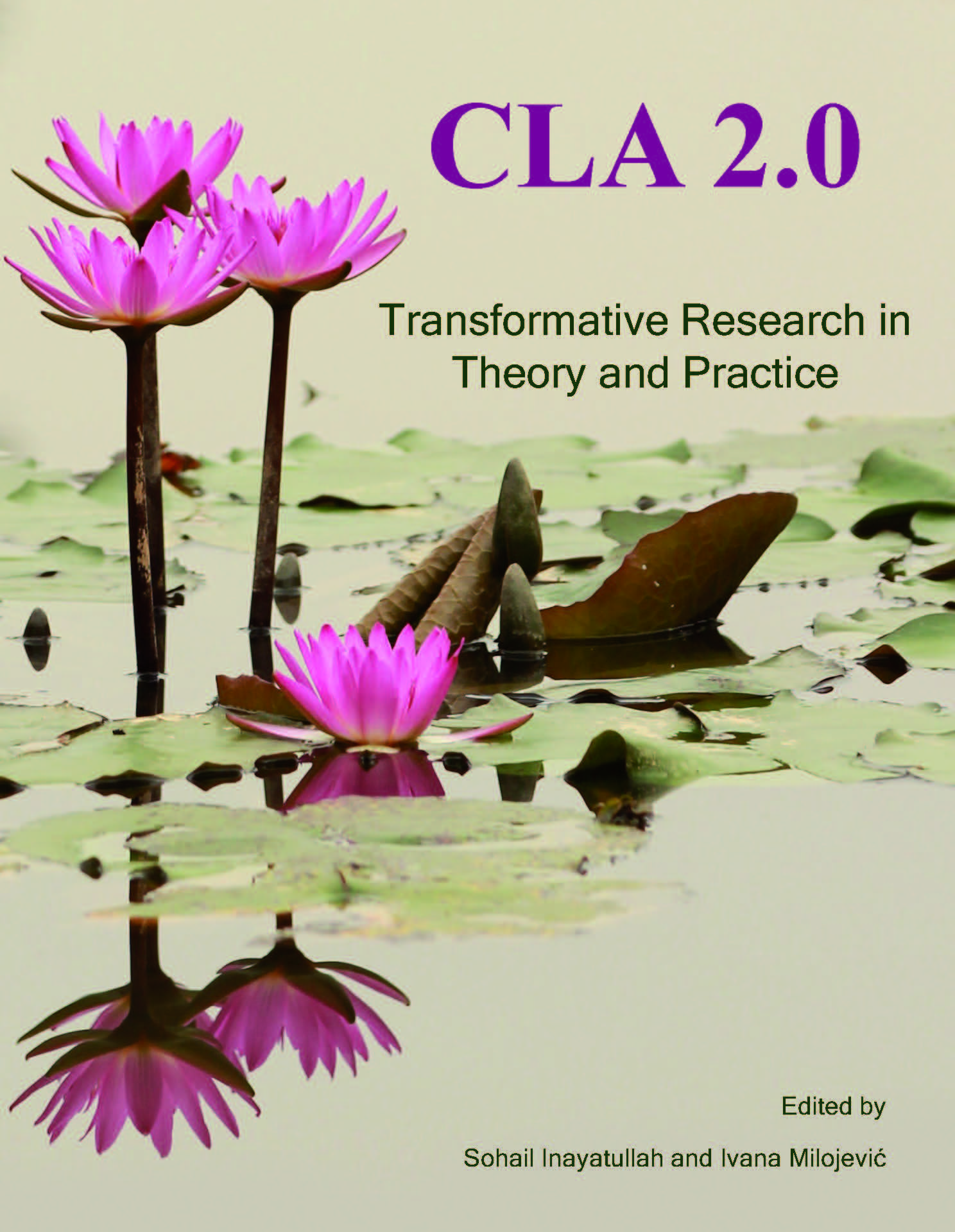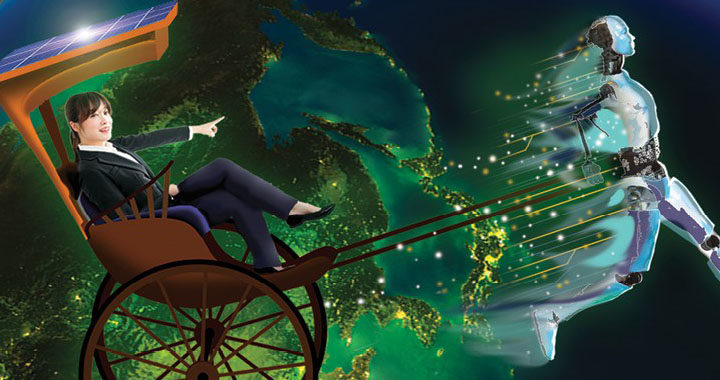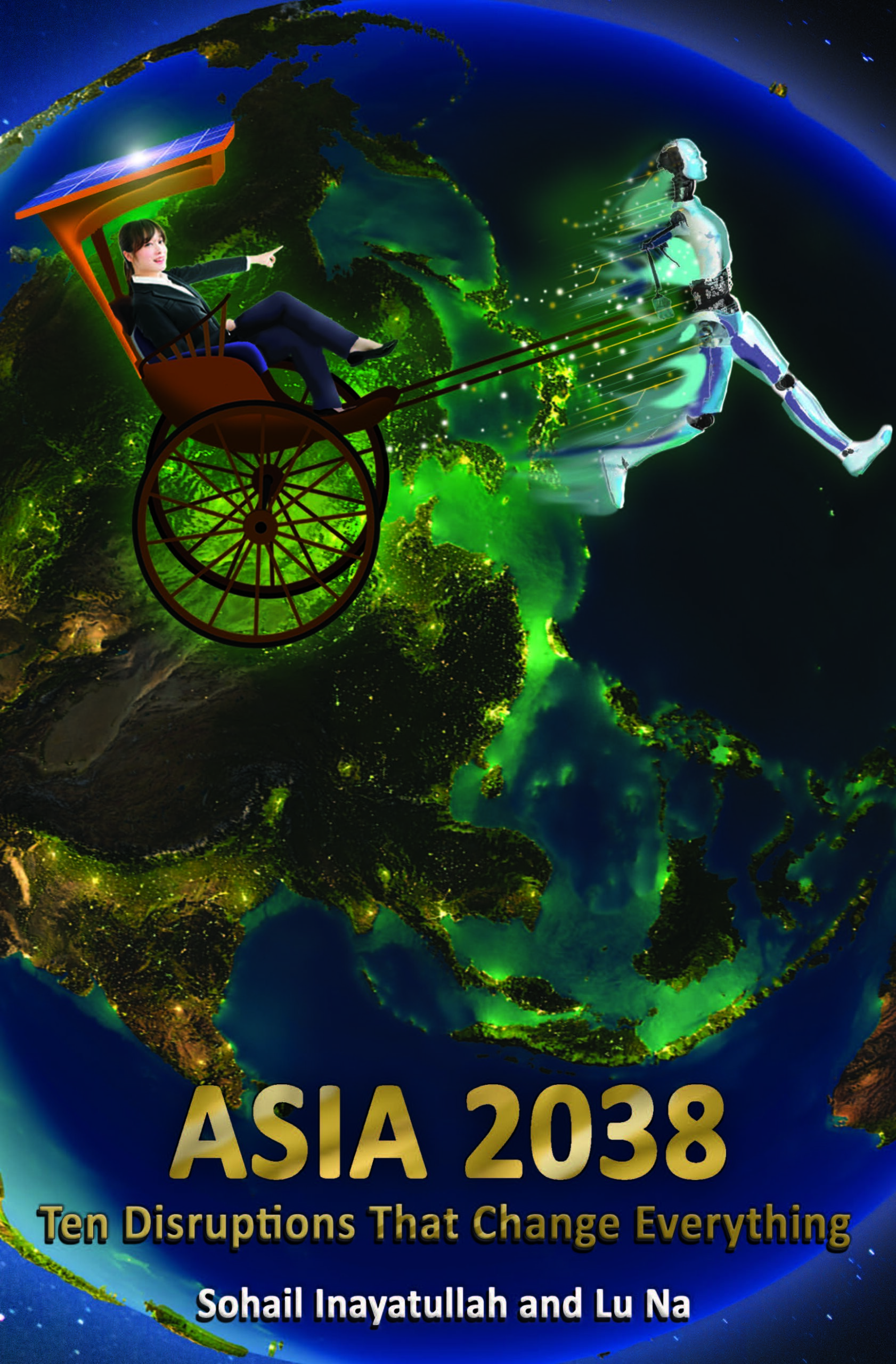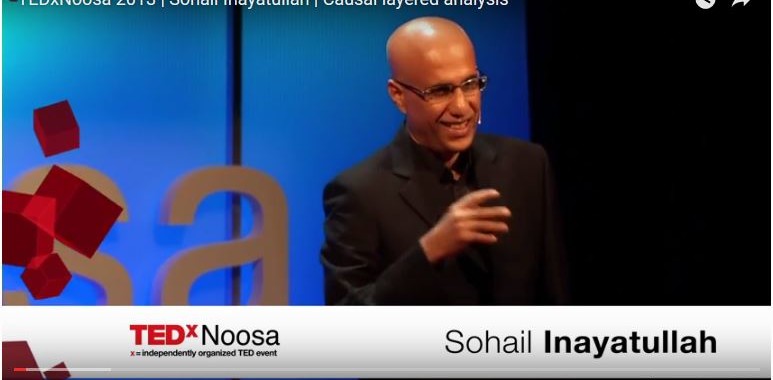By Sohail Inayatullah
ABSTRACT
This article explores the alternative futures of the university. After a review of critical drivers identified a decade ago in the book, the University in Transformation, three scenarios are presented. They are: Wikipedia Uni; Core-Periphery reversed and Incremental managerialism. In this last scenario, three zones of change are discussed: (1) zone of elite universities, (2) zone of mass education and (3) zone of experimentation. A final scenario, Bliss for all, the world as a university, is suggested in the conclusion. However, while we have the technology to create such a future, we currently do not have the collective wisdom – at best, bliss for the few is more likely.
In the University in Transformation [1], an anthology of articles on the futures of the university published 10 years ago, we – Jennifer Gidley and I – identified four critical drivers creating the futures of the university. In this essay, the drivers are reviewed and assessed as to how likely they are to continue to shape the plausible futures of the university. The essay concludes with alternative university scenarios.
GLOBALIZATION OF EDUCATION
The first driver identified was globalization, in its current neo-liberal form (and there are many types of globalization – spiritual, ecological/gaian, and utopian, for example), defining has been a resistance by states to continue to subsidize education [2]. This has meant a policy shift from considering education less as an investment and more as a cost [3]. Specifically it has led to categorizing parts of higher education as an export (in Australia, for example, in Brisbane [4] and Melbourne [5], education is the largest export, surpassing tourism) and aspects as an expense. The export-based curriculum areas– seeking to bring in students from the Asia-Pacific, particularly India – tend to be in the “real-world” areas of engineering, business, information technologies and vocational studies. When they are linked to immigration policy [6] they have especially grown, while other areas of knowledge such as philosophy and even languages, have been subjected to current market forces and cutbacks and thus have declined. Indeed, in the context of the continuing global financial crisis, just recently the Australian government announced that entry requirements would be relaxed for students wishing to study in Australia. As well, post-study work rights would be enhanced. [7]
The overall reason for education – as a civilizing force, as part of humanity’s treasure, as a long term investment in children, and as a right to dissent against the prevailing paradigm- has been put aside for shorter term market concerns. In the last ten years, this trend – and the drivers creating it – has not subsided but intensified.
These trends are likely to continue. What is likely to change is the direction of the exports. With the rise of Chindia [8], we can easily imagine a future where Chinese and Indian students stay at home, learning from local outposts of Western universities [9] as well as Chindia’s own educational institutions. Over a period of twenty years we can imagine Western students moving to the Asia-Pacific for higher education (and not only for language learning). While this may seem difficult to imagine now, if we go back twenty years, it would have been difficult to imagine the colossal economic rise of China (foreign reserves at 3.2 trillion dollars in 2011) [10], East Asia (for the first time Asia has more millionaires than Europe) [11,12] and segments of India. [13] Education for Chindia and much of East Asia remains an investment. Not a cost.
VIRTUALIZATION
The second trend identified was the virtualization of education. With fewer funds available for bricks and mortar and the logic of increasing the number of students, ministries of education and universities (led by India, Indonesia, Turkey, South Korea, China and other Asian nations) [14] have focused on using the Web to deliver education. While the savings are high – indeed, in the USA, one university , National Louis University, has even used the “Groupon” approach, offering a discount when at least fifteen people had signed up for the course [15]- and outreach stunning, what has partially hampered the success of distance delivery has been the mindset of university administrators and academics. They still remain in the expert-driven feudal model. That said, new applications; indeed, “an app for everything” is the new analogy for the futures of instruction. New applications are changing the nature of pedagogy and with exponential technological advancement we can see virtual becoming more like face-to-face. Costs will continue to go down (and climate change/peak oil/security concerns are likely to provide further incentives to virtualise). Innovation will continue to find ways for academics and students to become more comfortable in future virtualised “classrooms”. Over the long term the current distinctions between virtual and real will likely disappear and we, particularly digital [16] and genomic natives (the double-helix children), will become comfortable with different types of reality.
DEMOCRATIZATION – PEER TO PEER
The third trend identified was the democratization of education. By this we meant enhanced student participation as well as a flattening generally of the university. Over the last ten years, this has occurred but not expected. The peer to peer web platform has been the greatest flattening process – from Wikipedia to Wikileaks to www.ratemyprofessor.com.[1]
However, and this is crucial, democratization while partially recreating who creates knowledge, has not empowered students or academics in formal university or high school settings. The opposite has occurred. First, there has been a backlash against increased power of those below – a desire to return to the good old days of dominator authority. Second, as universities have adopted the neo-liberal globalization model, creating profits or merely surviving has meant retiring expensive professors and hiring cheaper younger PhDs. And, critically, the hiring has not been “full-time” but casual (no tenure, payment per course, no office space). In Australia,” casualization” is now 60% of the higher education workforce. [18] Comments Robin May who is currently completing her PhD on the university workforce. “You lead a very uncertain life being casual…you are literally hired by the hour, resulting in disengagement from the regular university life.” [19] Comparing the university to the garment industry, Patricia Kelly calls casual lecturers “piece workers of the mind” [20] And this is not a surprise. Globalization in its neoliberal variant “happens in an environment that is increasingly hierarchical, unequal, and insecure,” and it is gendered, women bear the brunt of inequity.[21] Experimental courses (new web courses, in particular) especially futures studies, gender studies and peace studies for example – have emerged by paying academics near volunteer wages. For those at the bottom pay scale, the problem becomes that of loyalty not just to the particular university (“why should I stay loyal when I am paid peanuts”) but to the university model of education itself, that is, “why should I not globalize myself and receive the benefits of globalization.” As loyalty breaks down we can anticipate far more innovation in the tertiary sector. This could include new academic run cooperative universities and alternative universities (with either particular ideological leanings or broader missions) attracting younger academics along different career trajectories. Along with some able to innovate, there will be many who will prefer, rightly, if not wisely, a politics of grievance in the university itself. As cutbacks continue, we can anticipate a far more challenging labor environment.
Returning to the good old days where education was a fully subsidized by the nation-state is currently unlikely but this does not necessarily mean retreating from the dignity of the academic and the nobility of the academic profession. Alternative futures are possible. For elite professors, the physical university and particular university branding will be far less important. In terms of phases, a possible trajectory would be from the lower run casual academic to the traditional tenure track academic to a portfolio academic approach (being linked to a number of universities) and finally to a model wherein the Professor becomes a brand unto him or herself. In each phase, agency is enhanced and the weight of structure reduced.
WAYS OF KNOWING – KNOWLEDGE ON THE EDGES
Our fourth driver or trend was multiculturalism in terms of new ways of knowing becoming an acceptable as part of pedagogy [22, 23, 24, 25]. There is no easy way to measure this but certainly the rise of the web with multiple languages and platforms has created more spaces then traditional hierarchies of knowledge. The rise of Chindia is slowly changing the game as well. But far more impressive has been technology itself as a way of mediating reality. We imagined far more diversity in knowledge regimes – indigenous ways of knowing, spirituality, integrated models of understanding. While these continue to mushroom, it is technology as a way of knowing that has been the disruptive, if not transformative, factor. With at least five billion [26] mobile phones now in global circulation and 6.07 billion estimated by the end of 2011 [27] and more of these becoming smart, pedagogy will keep on jumping the boundaries of the real into the differently real.
THE DISRUPTION
As always, leaving behind factory models of learning and teaching will be crucial as we move to a more 24/7 virtualized and globalized world. Focusing on ensuring equity and life wide and life long learning for those academics who do not become brands unto themselves or have portfolio careers, will be critical in the quest toward educational equity.
And, if national accreditation does break down or become porous, the 2.5 plus trillion dollar education industry [28] will be ripe for a major creative destruction. It will likely not be Google, Wikipedia or Facebook that will become the new Nalanda, Nanjing, Al-Azhar, Al Karaouine, Bologna, or Oxford or ….but someone else who will create the new platform for the pedagogies of the future. Is it wiser for nation-states to hold on to national accreditation, to regionalize as with the EU (and future Asian Union), or attempt to create something truly novel and lead the world by creating an institutional jump? Or…?
ALTERNATIVE FUTURES
These questions are best answered through a description of alternate higher educational futures. Three futures are suggested. They are: Wikipedia Uni, Core-periphery reversed and Incremental managerialism.
WIKIPEDIA UNIVERSITY
In the first scenario, two shifts are central. First is a far greater flattening of the university – its structure as well as who teaches and the nature of teaching. While this future includes tremendous global educational diversity, one apt phrase is “the return of Bologna.” In the original University of Bologna model, students hired the professors. Instructors even needed permission to leave the city. The second shift is the reduction or elimination of national accreditation by a select group of nations. While many nations refuse to follow – citing national security, economic development and fear of being overwhelmed by new wealthy corporate entrants – a few nations still experiment.
Porous national accreditation creates a major disruption leading to a social ecology of flatter global universities. The result is essentially Wikipedia University. There is still room for elite professors who ensure quality control as well as providing prestige. Dominator hierarchy is replaced by functional hierarchy. Quality gains are dramatic as the wisdom of the crowds, plus guidance by elite professors who are induced by salaries and innovation, lead the way. Income is generated through student fees and advertising on software and hardware applications. Large corporate information providers such as Google jump in. Apple and Android applications play a dramatic role in localizing the global Wikipedia University. Application developers migrate in droves to this new educational platform. New technologies develop that make virtual feel more and more similar to face-to-face. These include holograms and group sharing of information (Cloud 2.0), beyond our current understandings – learning becomes dynamic and evolves quickly.
This does not mean that space for traditional universities disappears. If anything this world is characterized, particularly in the first 20 years, as a social ecology in flux. However, the dinosaurs are the traditional universities. The ability to adapt, determine the nature of the new ecological landscape, reinvent one’s core functions, allow for emergence, and allow stakeholders – students, in particular – to help mould the emerging future is a great advantage. Traditional universities are unwilling to adapt and do not use stakeholders to create, as they see themselves as the experts, indeed, they are even unable to notice that they exist in a rapidly changing knowledge social ecology.
By 2050, the feudal nature of university education is finally overthrown and along with it the factory model of learning. Universities by 2050 are unrecognizable to the visitor from the 20th century.
CORE-PERIPHERY REVERSED
In the second scenario, core-periphery relations are reversed.[29, 30] Phase one of this is currently occurring in China and India with the reverse brain drain. Phase two is the massive investments in education in China in particular, but Asia generally (Japan, Singapore, South Korea, India, for example). Over time, research leads to a positive and creative innovation cycle. [31] China, already, in 2011 is poised to become the world’s patent leader. [32, 33] In the future, tired of rising student fees in the West, and many local Asian success stories, Asian students stay “home” and European and American students join them. Initially this is in the areas of business, science and languages but gradually other fields also become major exports. As the Asian Union moves from only East Asian nations- the Chinese Diaspora – to include other still developing nations, Asia becomes an educational powerhouse. An Asian credit transfer regime is created, similar to the EU Bologna process. [34] Traditional rote learning paradigms for students and factory model pedagogy from Professors is replaced by diverse learning styles. Elite Western professors flock to Asia for the higher salaries. The West begins to experience their own brain drain as students and academic flock to the Asia-Pacific. However, hubris in the West does not allow strategic reactions until too late. Of course, many western universities already have local branches throughout Asia, but these are bought by large Asian universities seeking to export their services back to the empire. By 2050 Asian universities have branch campuses throughout Europe, Australia, and even the United States. Success creates success. Innovation creates Innovation. Power creates reality.
INCREMENTAL MANAGERIALISM – BUSINESS AS USUAL
In this third future, innovations in web 2.0 and beyond (web 3.0: mobile, holograms), globalization, flattening (democratization) and the rise of Asia do not dramatically change the nature of the university. There is incremental change but this does not lead to a tipping over to a new future. Yes, more Asian universities rise in global rankings. Yes, there is far more delivery over the web. Yes, mobility becomes central to pedagogy. Yes, universities accommodate globalization and states reduce investment in them except for courses that bring in export earnings. Yes, many universities become more sustainable changing how they use energy and redesigning curriculum to be climate change and Gaia sensitive. Yes, a world green campus ranking takes off (green metrics). [35, 36] And yes, globo sapiens [37] and cultural creatives [38, 39] gain in strength, and intelligence [40] becomes far more integrated. But over time, the university’s one thousand year conservative tradition continues. Cautious deans are proven correct: squeeze below, attract high paying students, remain connected to the alumni and find expert researchers who can bring in large dollar grants. Three zones emerge: (1) the zone of elite universities that have historical brand recognition- high fees, huge endowments and alumni networks. The world’s leading thought leaders continue to be associated with them. With vast funds, they remains above the market, seeing education as part of civil society, as a human right. (2) The zone of mass education. While this becomes more and more Asia based – demographic dividends in terms of the ratio of young people to old – life long and life wide (formal and informal and creative mixes) learning in the West allows Western universities to grow as well. (3) The zone of experimentation. Even within business-as-usual world, niche universities continue to thrive. Technological and economic disruptions and value changes create spaces for new entrants but only in niche areas. These include Islamic universities or programs teaching Islamic banking, for example, not to mention the new ecological – gardens in universities and universities in gardens – knowledge centres. Some of these experiments move to the mass market and become routinised while others stay on the cutting edge, challenging the current paradigm.
WHAT IS THE RIGHT QUESTION?
There are other possible futures as well. In the University in Transformation, we suggested “Bliss for all” as an idealistic scenario – the world as not just a connected brain but the world as mind. In this future, education is truly for all and the planet becomes not just a complex adaptive learning organization but a healing network as well – learning for ananda/bliss. [1] However, in 2011, while the technology for a world brain appears nearer, the wisdom for a world mind-heart appears further. At best, bliss for the few.
And which future will eventuate? This is the wrong question. Which future does my university desire to create? What support – intellectual, technological, humans and values – do we need to create this desired future? And finally: in a changing social ecology, what and where do we maintain and sustain and what and where do we innovate and transform
NOTES
[1] Anecdotally, I remember well one foresight workshop I facilitated in November 2009 in Singapore for Raffles Institution with forty 14 year olds. All of them frequently used Wikipedia, and over 50% claimed to have contributed content to Wikipedia. A few – one or two – had heard of Encyclopedia Britannica. Most had heard of the United Kingdom. And according to a study by the scientific journal Nature, the level of errors is similar. [17] However, Wikipedia articles can be corrected swiftly, while Encyclopedia Britannica takes substantially longer.
REFERENCES
[1] S. Inayatullah and J. Gidley (Eds.), The University in Transformation: Global perspectives on the futures of the university. Wesport, Ct, Bergin and Gravey, 2000.
[2] J. Odin and P. Manicas (Eds.), Globalization and Higher Education. University of Hawaii Press, Honolulu, 2004.
[3] Magna Charta Observatory, Crisis, cuts, contemplations: How academia may help rescuing society, Proceedings of the conference of the Magna Charta Observatory 17-18 September 2009. Damini, Bologna, 2010.
[4] http://www.brisbanemarketing.com.au/media/Media-Release.aspx?id=807&returnurl=~/Media/Media-Releases.aspx (accessed 4 January 2011).
[5] http://www.melbourneinstitute.com/pwc-mi-asialink/2009/default.html (accessed 4 January 2011).
[6] http://www.smh.com.au/opinion/politics/the-yarra-monster-is-killing-us-20100822-13apt.html (accessed 4 January 2011).
[7] Fleur Anderson and Joanne Mather, Rules eased on student visas. The Australian Financial Review. 23, September 2011, 11.
[8] http://www.smh.com.au/business/chindia–you-aint-seen-nuthin-yet-20100923-15o2v.html (accessed 4 January 2011). For a more skeptical view, see S. Tharoor, A Chindia world. Deccan Chronicle 24 December 2010. http://www.deccanchronicle.com/dc-comment/chindia-world-412 (accessed 24 January 2011).
[9] NYU to open 1st American campus in Shanghai http://news.xinhuanet.com/english2010/culture/2011-01/21/c_13701018.htm (accessed 24 January 2011).
[10] Jamal Anderlini, China’s foreign reserves rise by $194bn. Financial Times. Ft.com.http://www.ft.com/cms/s/0/96d6d02c-d683-11df-81f0-00144feabdc0.html#axzz1A2M3mIGA (accessed 4 January 2011).
[11] Rand Corporation. Domestic Trends in the USA, China and Iran. www.rand.org (accessed 4 January 2011).
[12] http://www.terradaily.com/reports/Asia-Pacific_millionaires_worth_more_than_Europeans_study_999.html
(accessed 4 January 2011).
[13] S. Tharoor, The Elephant, the tiger and the cell phone: Reflections on India, the emerging 21st – century power. New York, Arcade Publishing, 2007.
[14] http://www.itu.int/ITU-D/ict/publications/inet/1999/ExeSum.html (accessed 4 January 2011).
[15] http://www.psfk.com/2011/09/university-uses-groupon-to-attract-new-students.html (accessed 29 September 2011).
[16] For more on this, see the work of M. Prensky, www.markprensky.com (accessed 24 January 2011).
[17] http://www.nature.com/nature/journal/v438/n7070/full/438900a.html Accessed 29 9 2011. http://www.wired.com/culture/lifestyle/news/2005/12/69844. Wikipedia, Brittanica: a toss up. (Accessed 29 9 2011).
[18] B. Luyt et al, Young people’s perceptions and usage of Wikipedia. Information research. 13(4) December 2008. http://informationr.net/ir/13-4/paper377.html (accessed 5 January 2011).
[19] S. Whyte, Aging academics set university time bomb. The Sydney Morning Herald 16 January 2011. http://www.smh.com.au/national/ageing-academics-set-university-timebomb-20110115-19ry1.html (accessed 24 January 2011).
[20] P. Kelly. Personal communications. 25 January 2011. pakelly@westnet.com.au.
[21] I. Milojevic, A critique of globalization: Not just a white man’s world in J. Dator, D. Pratt and Y. Seo (Eds.), Fairness, globalization and public institutions. University of Hawai’i Press, Honolulu, 2006, 82. For a feminist view on educational futures, see I. Milojevic, Educational futures: Dominant and contesting visions, Routledge, London, 2005.
[22] S.Inayatullah, M.Bussey and I. Milojevic (Eds.), Neohumanistic educational Futures. Tamkang University, Tamsui, 2006.
[23] M. Bussey, S. Inayatullah and I. Milojevic (Eds.), Alternative educational futures. Sense Publishers, Rotterdam, 2008.
[24] Z. Sardar (Ed.) Rescuing all of our futures. Praeger 21st Century Studies. Twickenham, England, 1999.
[25] R. Sidhu, Universities and globalization: To market, to market, Lawrence Erlbaum Associates Inc. New Jersey, 2004.
[26] Jagdish Rebello, Global wireless subscriptions reach 5 billion. September 17, 2010. http://www.isuppli.com/Mobile-and-Wireless-Communications/News/Pages/Global-Wireless-Subscriptions-Reach-5-Billion.aspx.Accessed (accessed 4 January 2011).
[27] Syed Talal, Global mobile subscribers to cross 6 billion, Pakistan ranks 9th. http://tribune.com.pk/story/256342/global-mobile-subscribers-to-cross-6-billion-pakistan-ranks-9th/ (accessed 8 October 2011).
[28]Education is a 2.5 trillion dollar globally. http://www.edarabia.com/15179/education-is-a-2-5-trillion-business-globally/ (accessed 9 October 2011).
[29] US Universities losing clout in global education market.
http://www.huffingtonpost.com/2010/06/03/us-universities-losing-cl_n_599112.html (accessed 4 January 2011).
[30] Lee Lawrence, US college degrees: Still the best among world’s top universities? The Christian Science Monitor -http://www.csmonitor.com/layout/set/print/content/view/print/304688 (accessed 4 January 2011).
[31] Particularly noteworthy is the futures research at the Universiti Sains Malaysia. See, University Sains Malaysia, Constructing higher education scenarios. Penerbit Universiti Sains Malaysia, Penang, 2007.
[32] Gordon Orr, Unleashing the Chinese inventor. The Wall Street Journal Asia. 28 December 2010.
http://online.wsj.com/article/SB10001424052748704138604576030491764296296.html. (accessed 5 January 2011).
[33] China poised to become global innovation leader. http://thomsonreuters.com/content/press_room/legal/626670 (accessed 5 January 2011).
[34] M. Kelo Ed, The Future of the university: Translating Lisbon into practice. Lemmens, Bonn, 2006
[35] Nottingham celebrates world’s green campus ranking. BBC.com. http://news.bbc.co.uk/local/nottingham/hi/people_and_places/newsid_9353000/9353883.stm (accessed 24 January 2011).
[36] UI GreenMetric world university ranking. http://greenmetric.ui.ac.id/ (Accessed 8 October 2011)
[37] P. Kelly, Toward globo sapiens: Transforming learners in higher education, Sense Publishers, Rotterdam, 2008.
[38] P. Ray and S. Anderson, The Cultural creatives. New York, Random House, 2000. https://www.wisdomuniversity.org/emerging-culture.htm (accessed 8 October 2011).
[39] H. Tibbs, Changing cultures values and the transition to sustainability, Journal of Futures Studies, 15 (3), 13-32.
[40] M. Anthony, Integrated intelligence: classical and contemporary depictions of mind and intelligence and their educational implications. Sense Publishers, Rotterdam, 2008.


